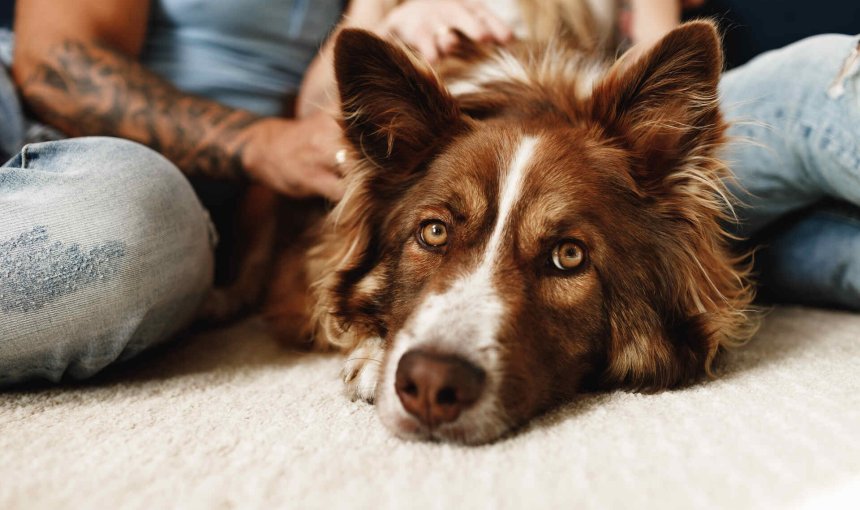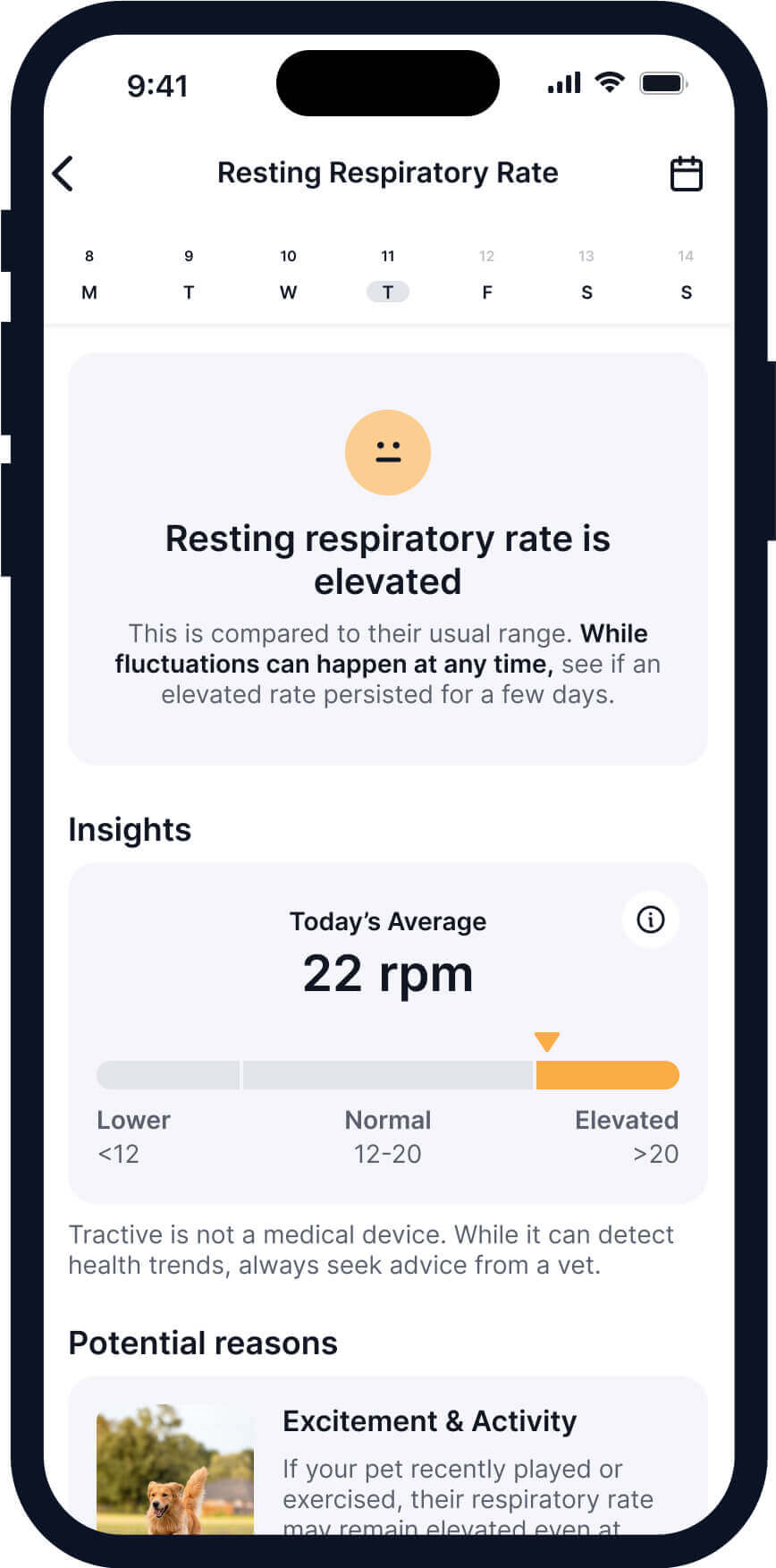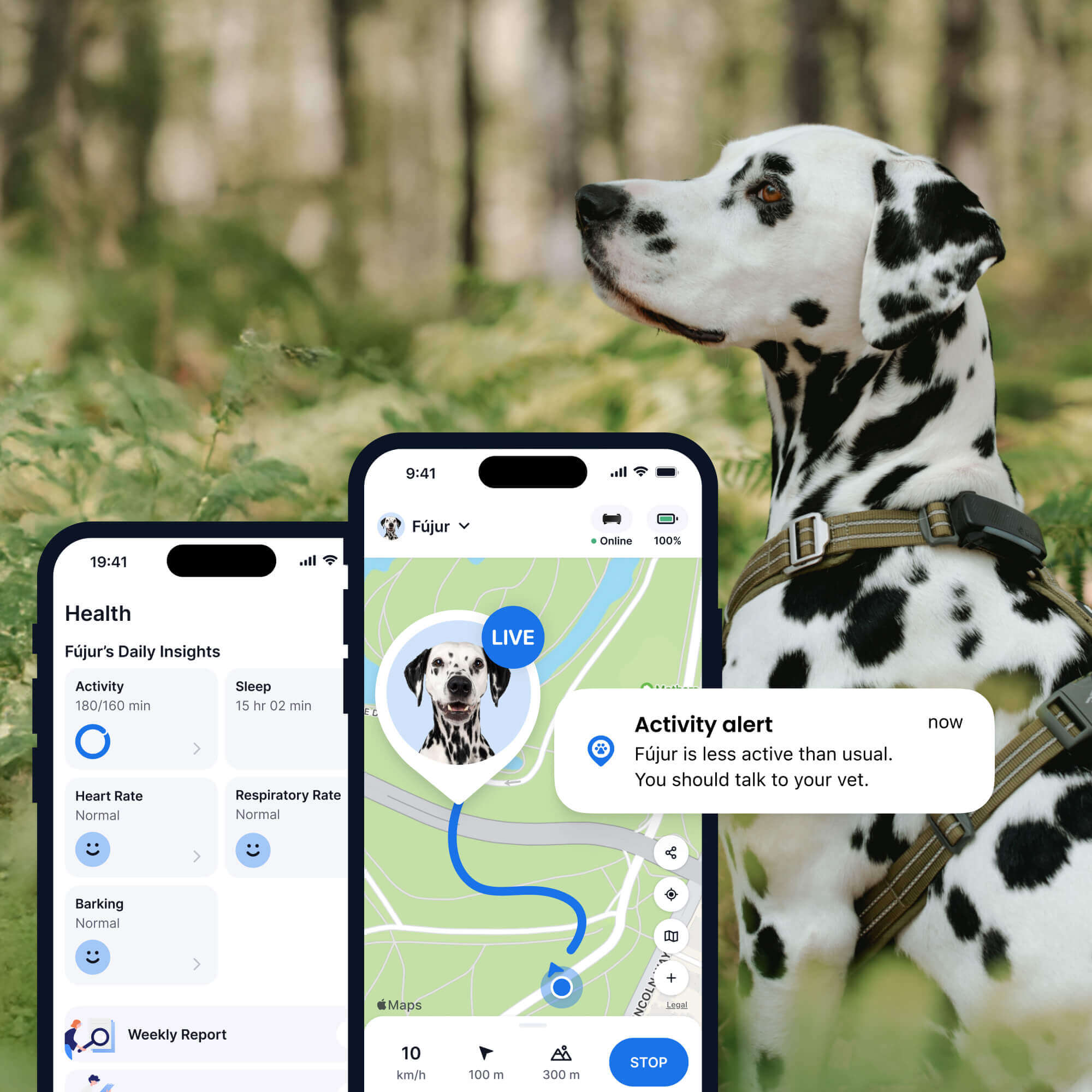Why Is My Dog Having Trouble Standing and Walking?
Here are all the reasons behind your dog's sudden mobility troubles, when to head to the vet, and the #1 way you catch it early.

It’s natural to be concerned if your dog was once a whirlwind of energy – but now struggles with just getting up and getting around. So if you’ve landed here wondering, why is my dog having trouble standing and walking all of a sudden? – start here. We’re going to cover the main causes of your dog’s mobility trouble, when it’s time to head to the vet, and how you can catch on to changes in your dog’s activity that much quicker and earlier.
Key Takeaways
Slowing down is a potential health indicator
While some decrease in mobility can be a normal part of aging, a sudden and significant drop in a dog’s activity level can signal a more serious health issue.
Trouble standing can be caused by various medical issues
Potential causes range from injuries and joint problems like arthritis to neurological conditions and exposure to toxins. The article also mentions that it could be a sign of a medical emergency.
A Tractive smart dog tracker can work as an early warning system
Your tracker logs your dog’s daily activity and can alert an owner to a sudden drop in “active minutes,” helping to spot potential mobility issues early on.

Always know your buddy is healthy & safe
Read moreWhat causes sudden mobility issues in dogs?
All dogs – no matter how active – might experience some wear and tear in their joints over the years. So it’s normal to see them slow down a bit with age. What’s important is how suddenly their activity drops. If your dog is suddenly having trouble doing simple activities like standing or walking, it could be due to:
A condition linked to your dog’s daily activity
You know your dog and their habits best, so keep an eye on them during your daily walks or runs. It could be that they’re overexerting themselves or have gotten injured without you noticing! Because more often than not, a sudden drop in your dog’s activity could be due to:
- Injuries
Sprains, strains, internal injuries, or fractures from activities like jumping or falling. - Arthritis or joint Issues
Degenerative joint diseases, especially in older dogs, can cause sudden pain and movement difficulties. - Hip dysplasia
A genetic condition where the hip joint doesn’t fit properly, leading to arthritis and mobility issues. - Knee injuries (e.g., ACL Tears)
Tears in the anterior cruciate ligament may cause instability and hind leg weakness. - Exercise-induced collapse (EIC)
A genetic disorder causing sudden collapse after intense exercise, primarily in sporting breeds. - Muscle weakness
Including conditions like myasthenia gravis or overexertion.
💡A smart dog tracker can help you figure out what’s a normal amount of exercise for your dog – and how you can catch on to a gradual drop in their activity over time, which could be a potential red flag. We’ll cover it in detail a little further below.

Get health alerts for your dog
Our pups can’t always tell us if something’s wrong. But if their tracker detects unusual changes in their routine, you’ll get an alert, helping you catch potential issues early.
Other causes of mobility issues in dogs
If you and your dog aren’t the sportiest pair, it’s normal to wonder why your dog is having trouble standing and walking seemingly out of nowhere. Sadly, it could also be due to:
- Fibrocartilaginous embolism (FCE)
A spinal stroke caused by a small piece of cartilage blocking an artery, leading to sudden, painless paralysis, often in larger breeds.1 - Lumbosacral stenosis
A narrowing of the spinal canal in the lower back, which can cause pain, hind leg weakness, and difficulty standing or walking. - Neurological conditions
Such as intervertebral disc disease (IVDD), degenerative myelopathy, or strokes. Senior dogs might face cognitive decline or mobility challenges due to aging. - Toxins
Exposure to certain toxins or poisons may result in tremors, weakness, or paralysis. - Medical emergencies
Issues like cardiac problems or infections can turn up as mobility problems. - Vestibular syndrome
Which can affect your dog’s balance, leading to uncoordinated movements and difficulty standing. - Cushing’s disease
Excessive cortisol production can cause muscle weakness, making it hard for dogs to stand or climb stairs. - Polyneuropathy
A disorder affecting multiple peripheral nerves, leading to muscle weakness and atrophy.
Warning signs that mean you should drop by your vet
It’s important to act quickly and head to your vet for a checkup if you notice:
- Sudden paralysis or inability to stand,
- Extreme pain when you try to move your dog,
- Uncoordinated or wobbly walking,
- Any signs of injury (e.g., swelling or bleeding),
- Loss of bladder or bowel control – which might turn up as accidents around the house
- Weakness or lethargy,
- Shaking,
- Excessive panting
Your vet can best help you rule out any life-threatening conditions and help your dog get the care they need.
What to expect at your vet’s
When you arrive, your vet will likely:
- Examine your dog
A physical exam can help check for pain, swelling, or signs of neurological impairment. - Conduct a bunch of diagnostic tests
Including X-rays, blood work, or an MRI to help pinpoint the problem. - Recommend treatment based on what’s causing your dog’s symptoms
Which might include anti-inflammatory medications, rest, physical therapy, or in severe cases, surgery.
Go prepared with a log of your dog’s symptoms, including how long they’ve been going on for.
Steps you can take to care for your dog at home
While following your vet’s instructions, you can also:
- Provide your dog a comfortable space
Use soft bedding in a quiet, accessible area. Ensure your dog can reach food and water without straining. - Help your dog get around
Support them with a harness or a towel under their belly for short walks to avoid further injury. Ramps can help them get around to elevated spots. - Encourage your dog to rest
Limit the walks and playtime to allow your dog to heal, but keep them engaged with gentle mental stimulation like puzzles or treats. - Monitor your dog’s progress
Keep track of their activity levels and mobility and get in touch with your vet if you don’t see their symptoms improve.
A smart dog tracker can help you spot mobility issues early
If you’re wondering why your dog is having trouble getting around all of a sudden – it may not be so sudden after all! A dog’s behavior is a key indicator of their health, and subtle changes in their activity or sleep patterns can be early signs of underlying issues, including mobility problems. A smart dog tracker with health monitoring features, like Tractive, can help you better understand your dog’s health – and spot any problems early.
Strapped to your dog’s collar, you can now:
Monitor your dog’s daily activity
Your tracker records your dog’s active minutes throughout the day, helping you ensure they are getting enough exercise. If your dog’s activity level suddenly drops over a period of weeks or months, it could be a sign of joint pain, arthritis, or other conditions that affect mobility.
Keep an eye on your dog’s vital signs
Your Tractive device also monitors your dog’s resting heart rate and breathing rate. Persistent changes in these vital signs can be an early warning system for a variety of health issues. With your tracker, you can catch on to these early and get in touch with your vet before the condition becomes more serious.

Spot potential health issues early
Tractive constantly analyzes your dog’s Health Monitoring data to check if there’s any weird change that might need your attention. If it detects a drop in your dog’s activity or a change in their sleep quality, you’ll get a Health Alert – prompting you to get them checked up. Think of it as an early warning system to spot potential health issues before they worsen.
With a little vigilance and monitoring, you can spot the signs of a drop in your dog’s energy that much quicker, take action by bringing them to a vet, and help them get the care they need. Your pup will thank you for it!




